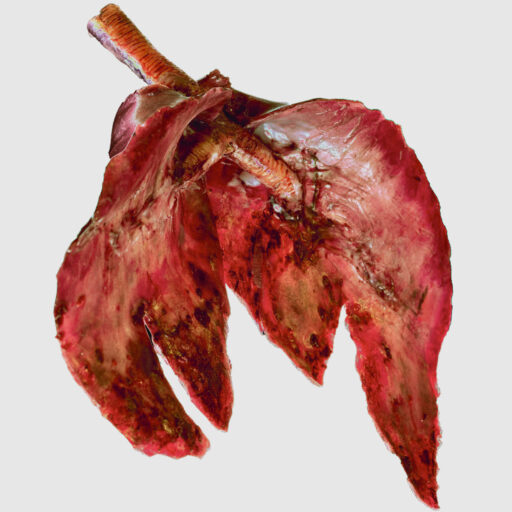RAW/ à vif
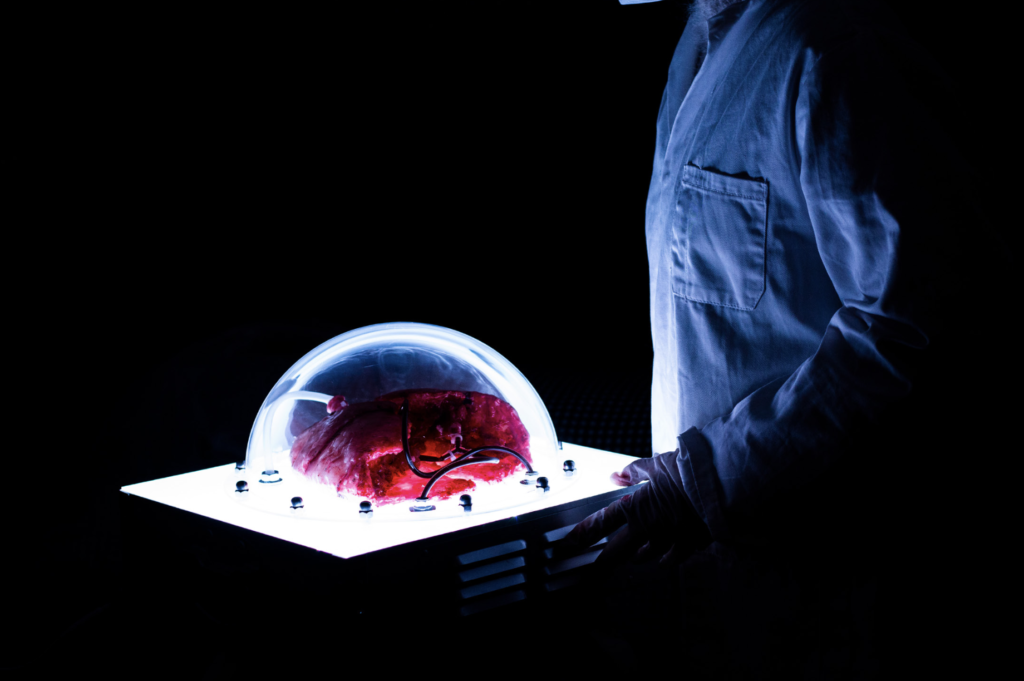
Scenario 2:
The Body Part
Farmer
© the artist
Photo:
Noémie Soula
Raw/à vif or the unnatural desire to design a human is a project at the crossroad between transhumanism, biology, and art that exploring current and future bioethical dilemmas.
By exploring how humanity could be transformed by current scientific research, the inquiry exposes three imaginary scenarios depicting new job positions.
Emerging biotechnologies, such as tissue engineering and genetic editing, are challenging today’s medical practices pushing us to reframe current bioethical decisions.
In the pursuit of making humankind better, those biotechnologies overturn the fundamental and philosophical definition of being human.
What are the consequences of designing a human body?
The Matrix Sculptor
or The Future Use of Extracellular Matrix (ECM) Decellularisation
The increase in organ transplantation had created a new artistic opportunity: the matrix sculptor.
By using decellularised connective tissues – like fat – this new kind of craftsmanship enabled artists to carve the desired organ for its client.
The final sculpted artefact can now provide natural scaffolds for tissue engineers to grow the final organ.
All body parts can be prototyped, even potentially the ones that are not yet existing.
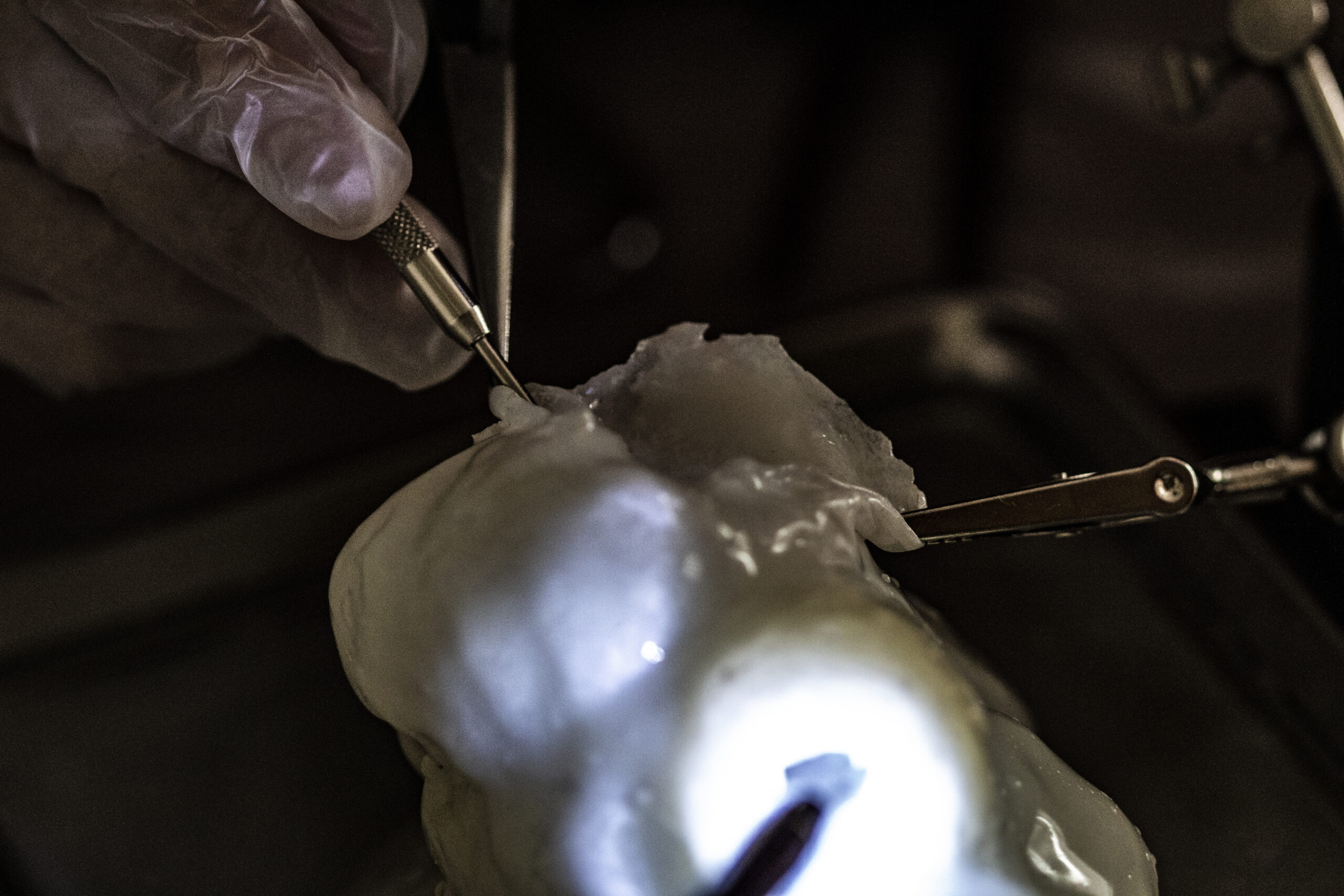
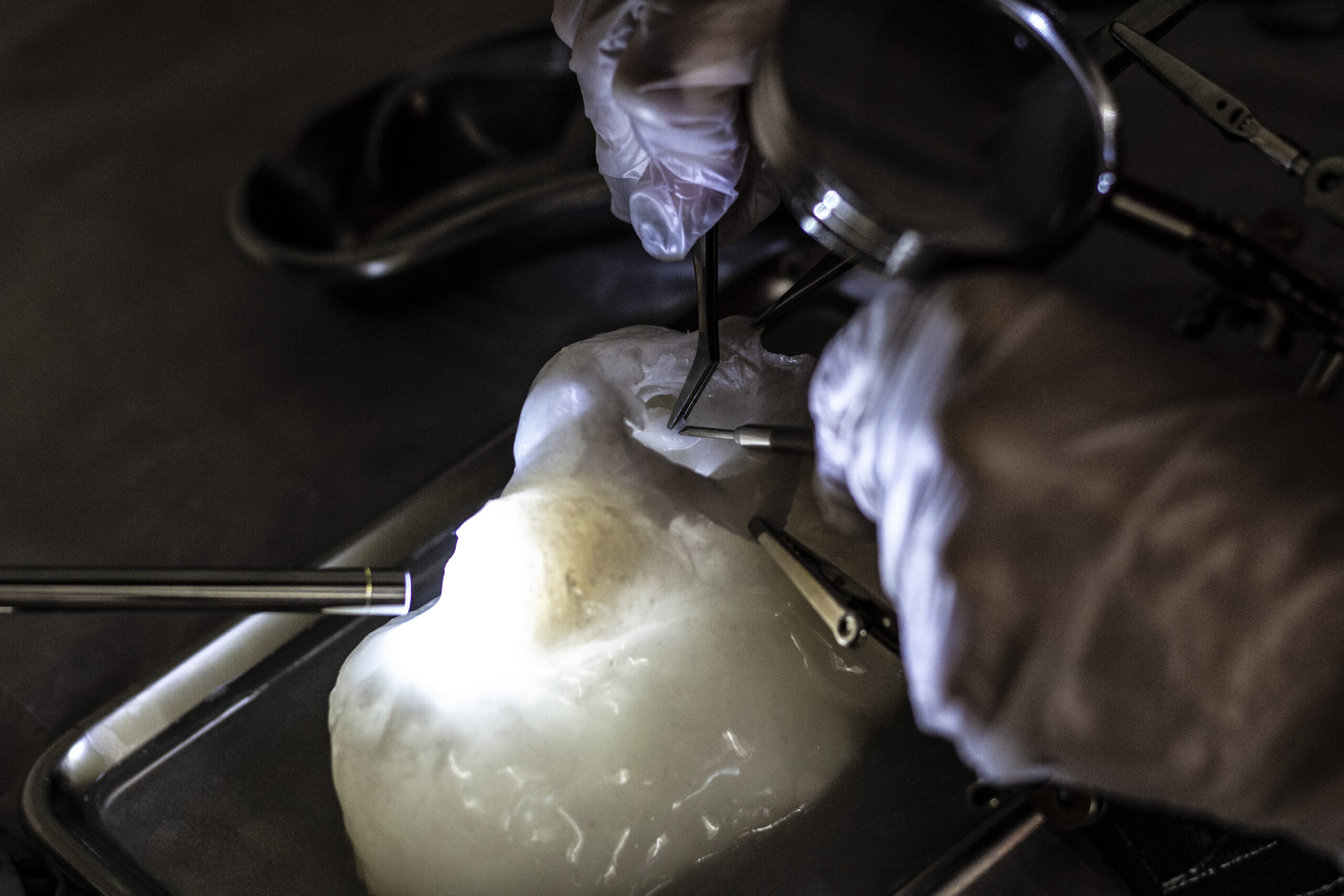
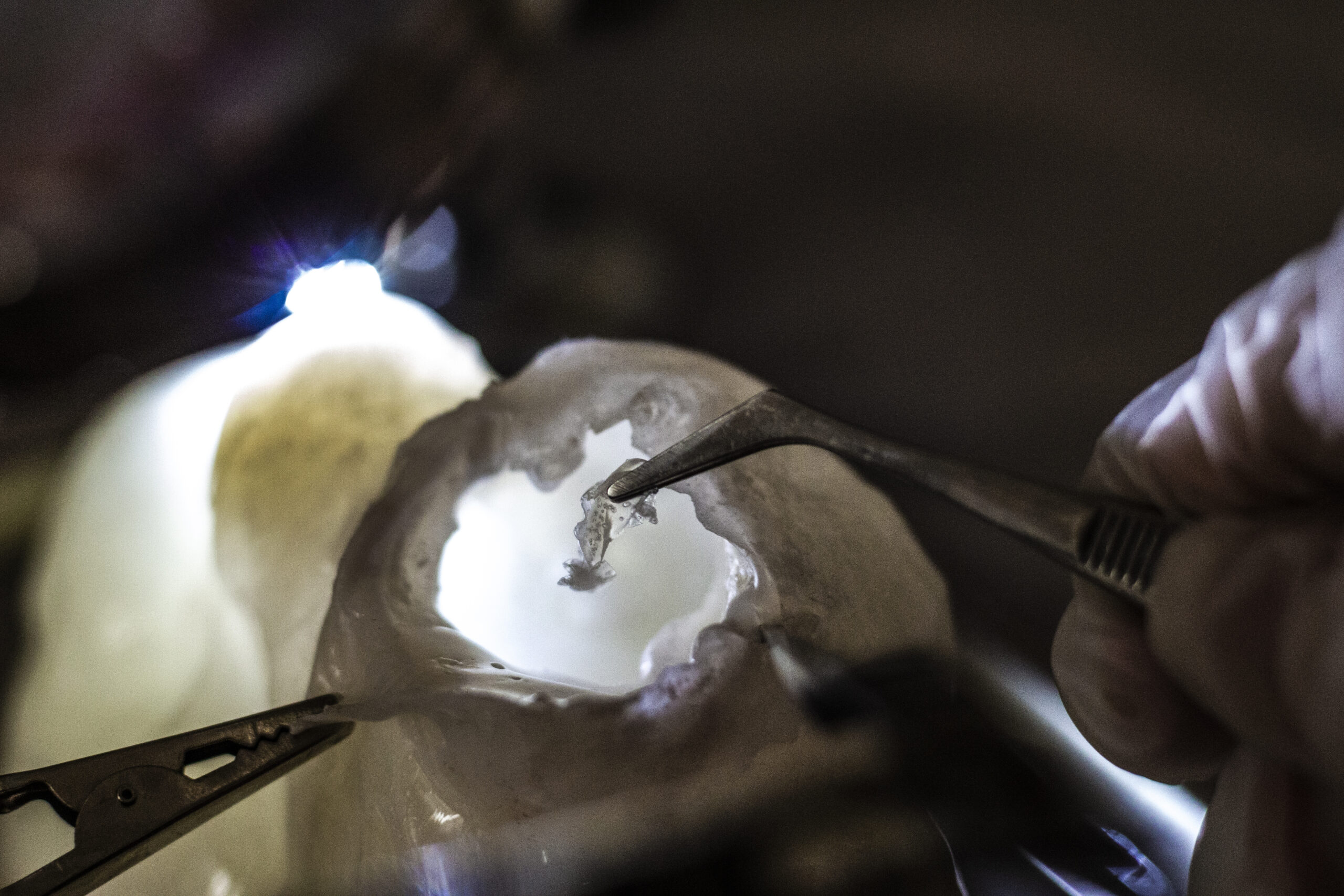
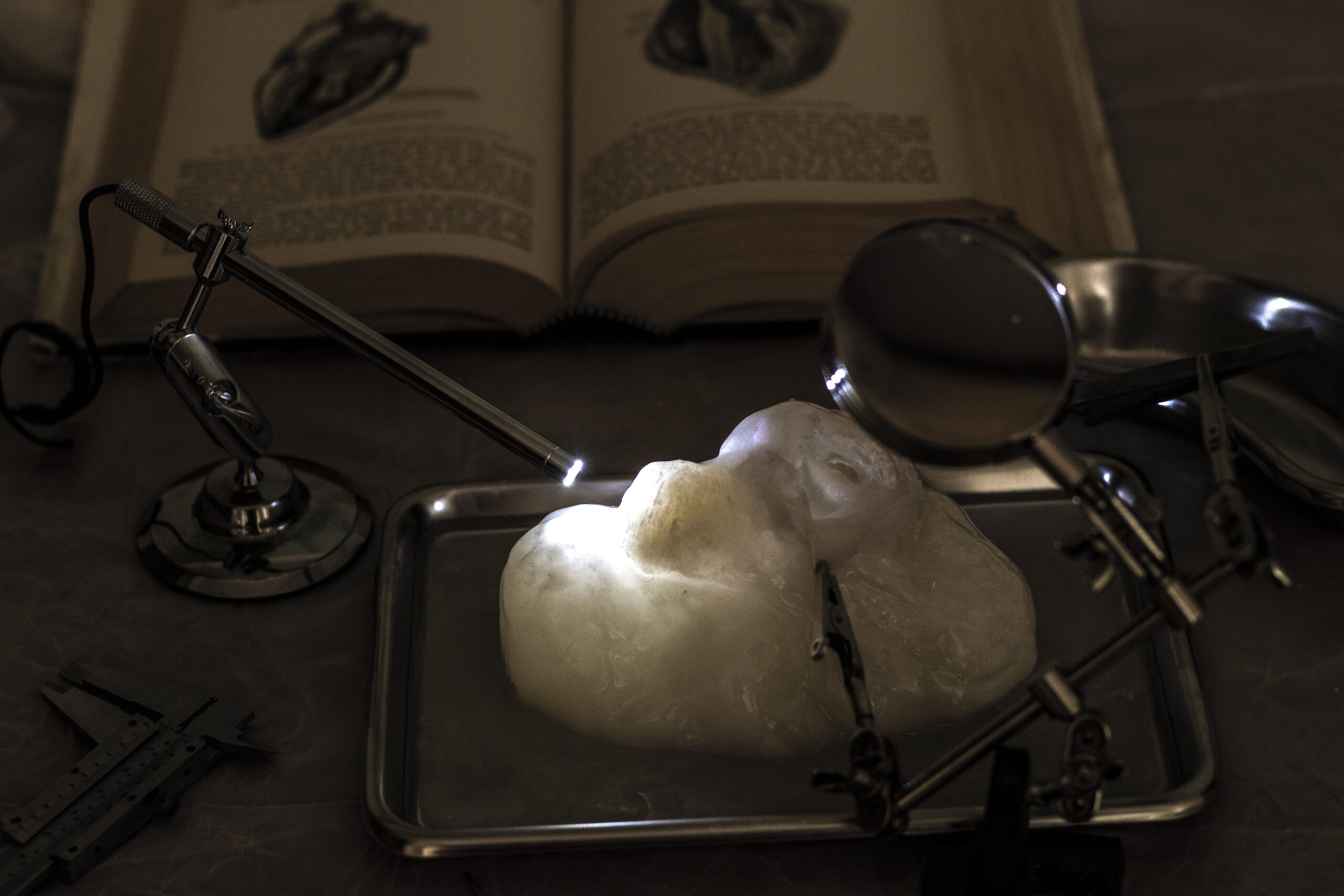
The Matric Sculptor (4 views),
sculpting the interior of an heart in ECM
© the artist
Photo: Noémie Soula
The Body Part Farmer
or The Future Use of Tissue Engineering
Pushing forward the practice and field of tissue engineering, emerging manufacturers, commonly called Bady Part Farmer, are offering services at larger scale. They can grow body parts or even organs by embedding stem cells previously collected from patients on 3D scaffolds (3D printed biomaterials strucutres or organ sculpted by the matrix sculptor). The service is open to any person requesting it, at a cost.
Like a car, body parts can be produced, repaired, or changed.
The Body Part Farmer (4 views),
monitoring growing lungs,
© the artist
Photo: Noémie Soula
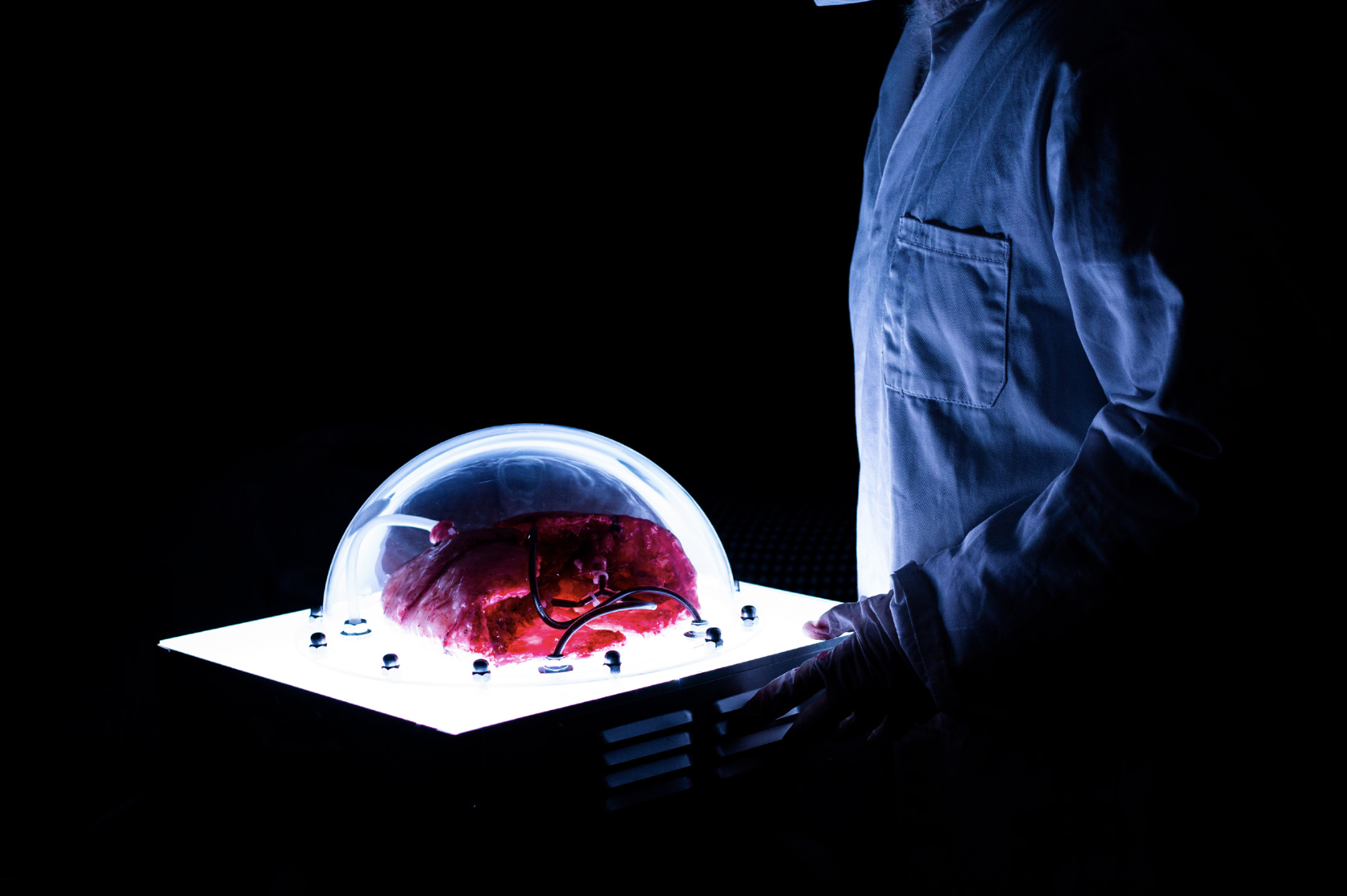
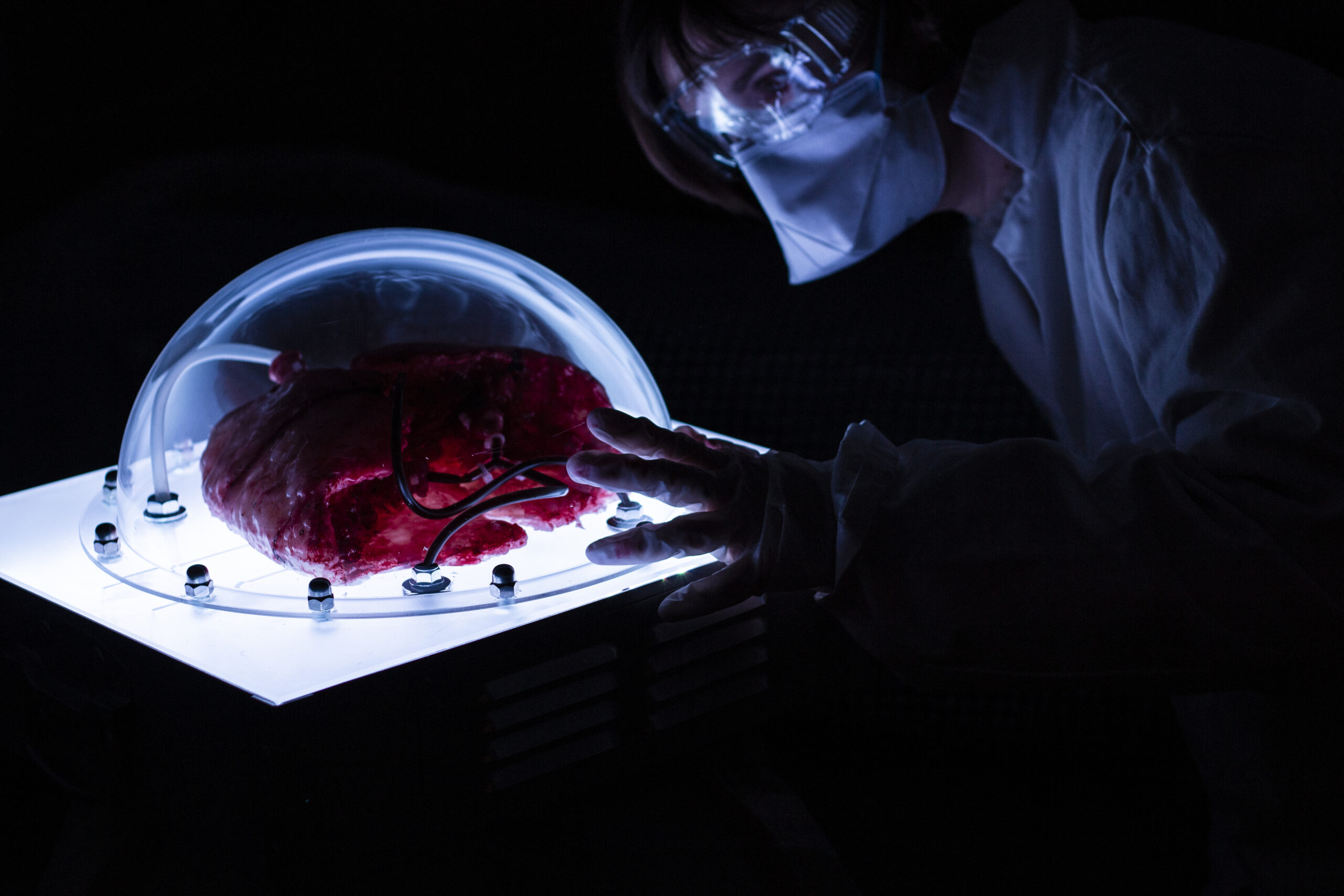
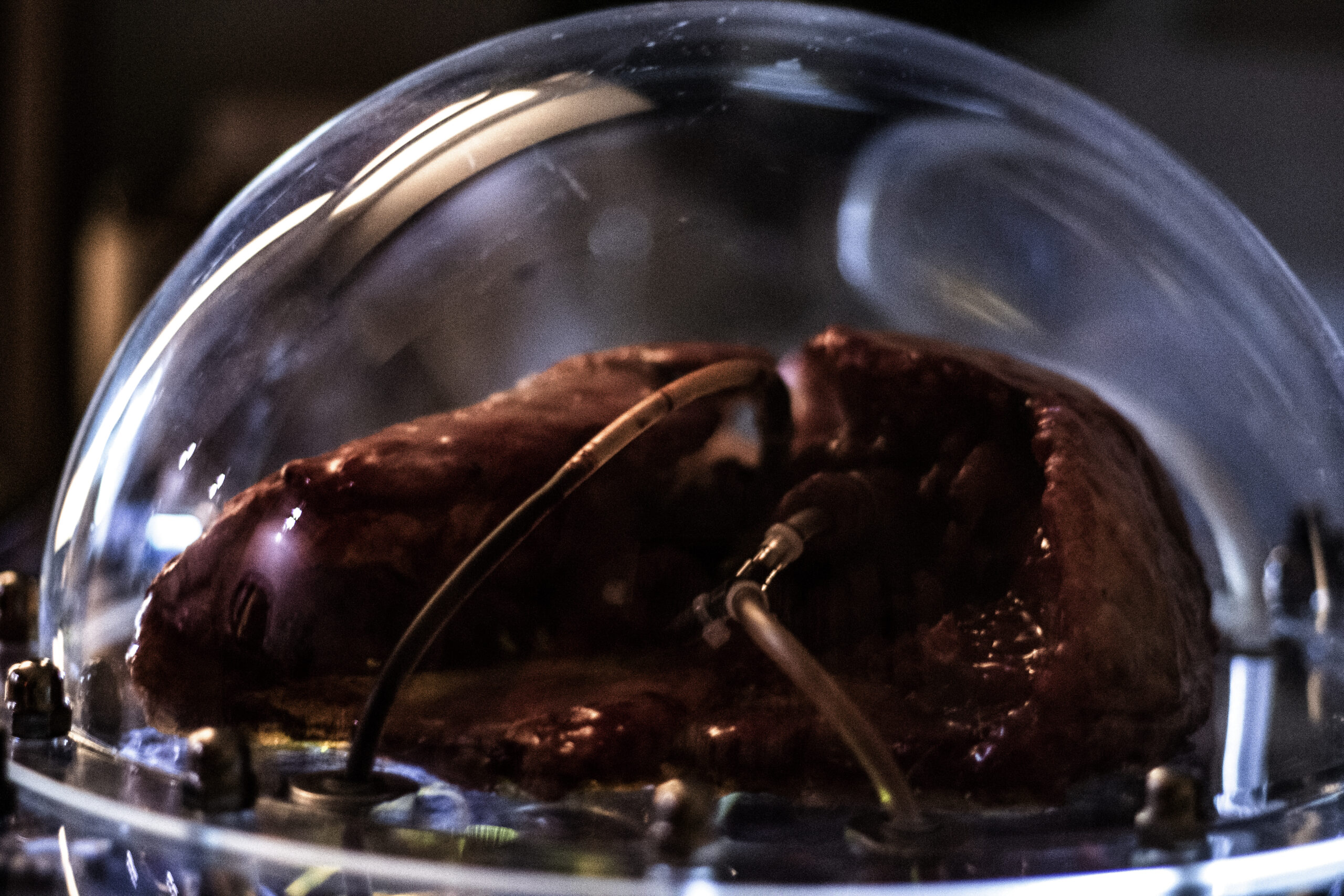
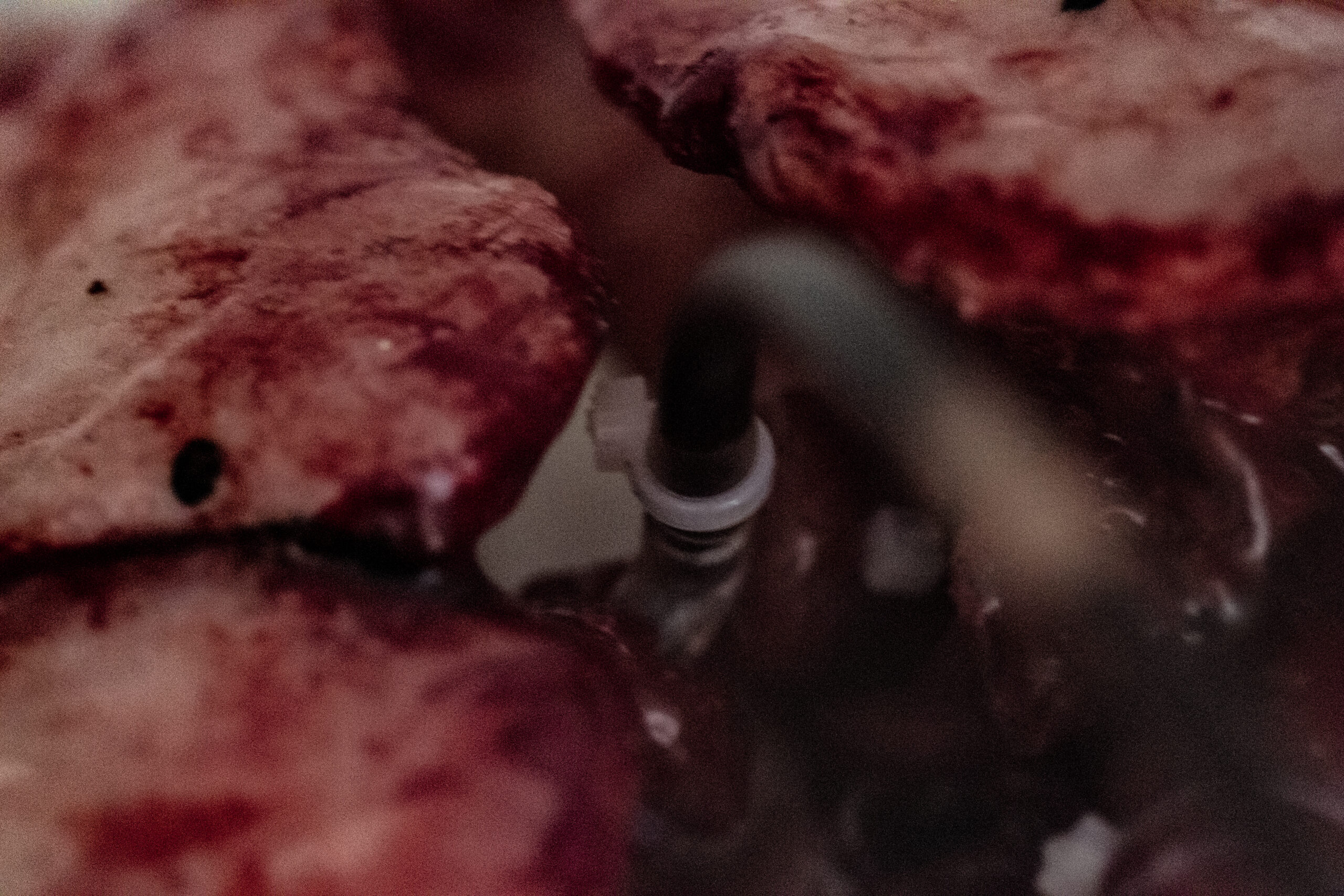
The Organ Designer
or The Future Use of Genetic Editing and Synthesised DNA
Scientists can now edit and print DNA sequences, with the potential to induce specific modifications to improve human health conditions.
An interdisciplinary research team composed of designers, geniticians and tissue engineers, is now developing an innovative and unique DNA sequence to give the ability to kidneys to regrow autonomously when failure or malfunction happens.
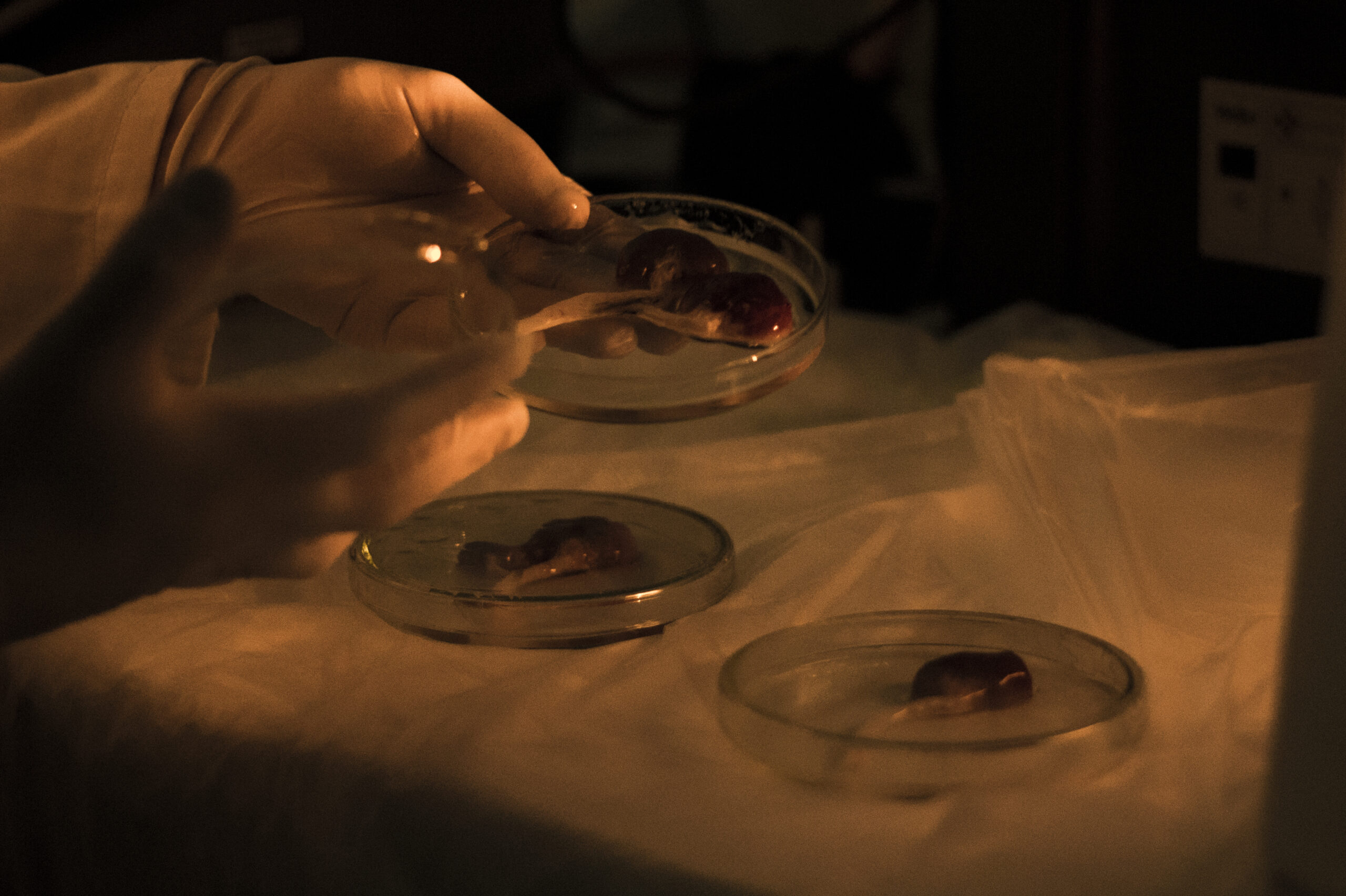
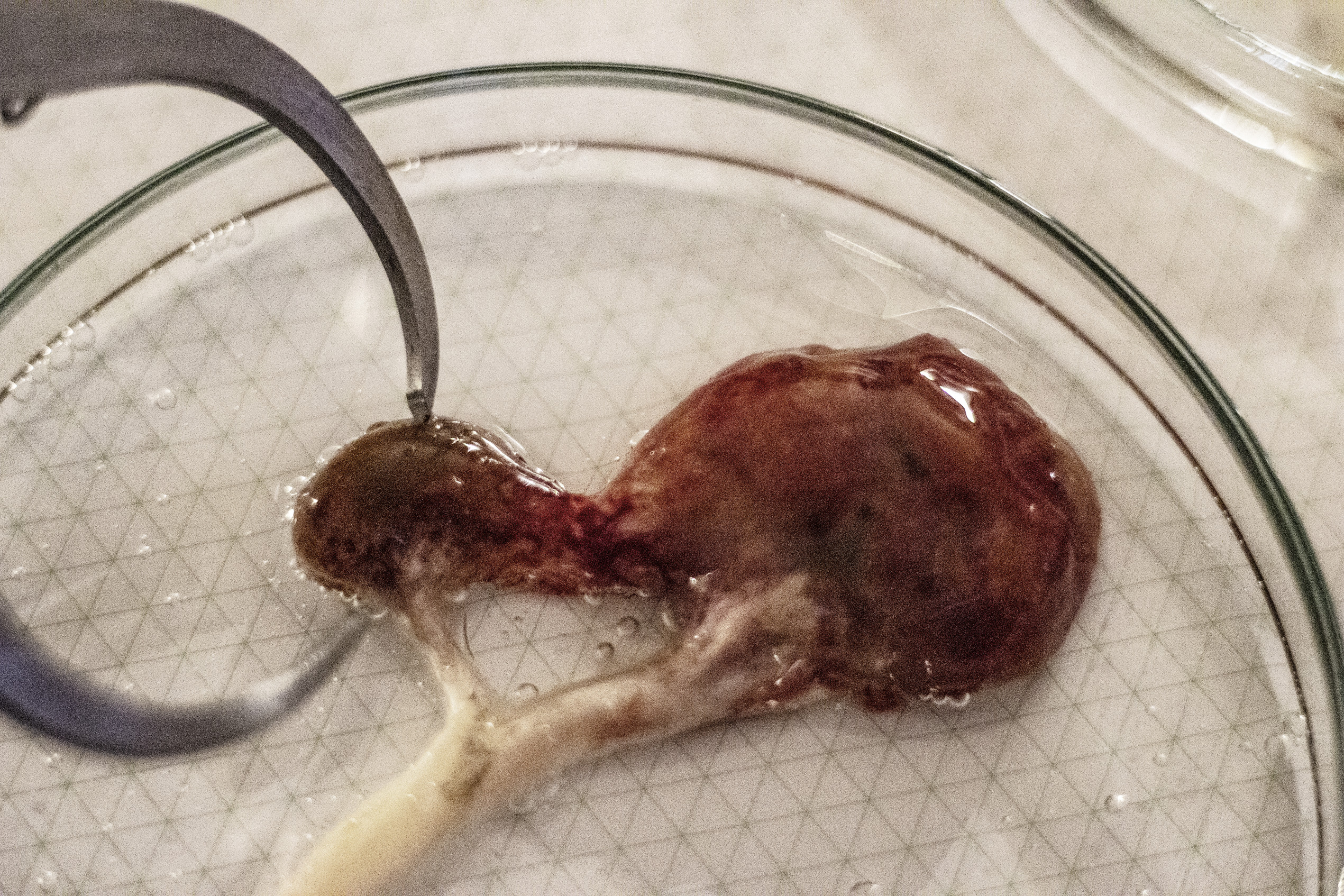
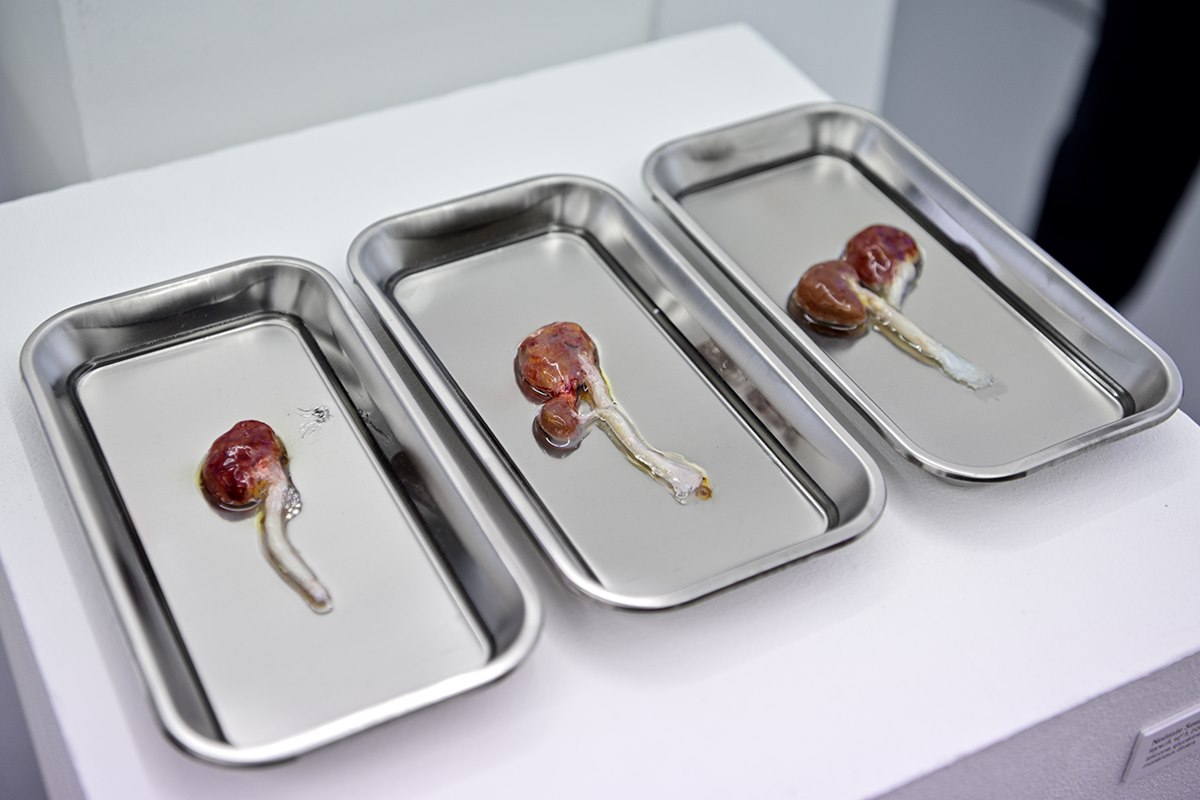
The Organ Designer (3 views),
Stages of kidney regrowth after failure,
© the artist
Photo: Noémie Soula & Stéphan Brion
EPIDERMOTOPIA
Plateforme Galerie
September 2021
Paris, France
Photo: Stéphane Brion
Curated by Collective
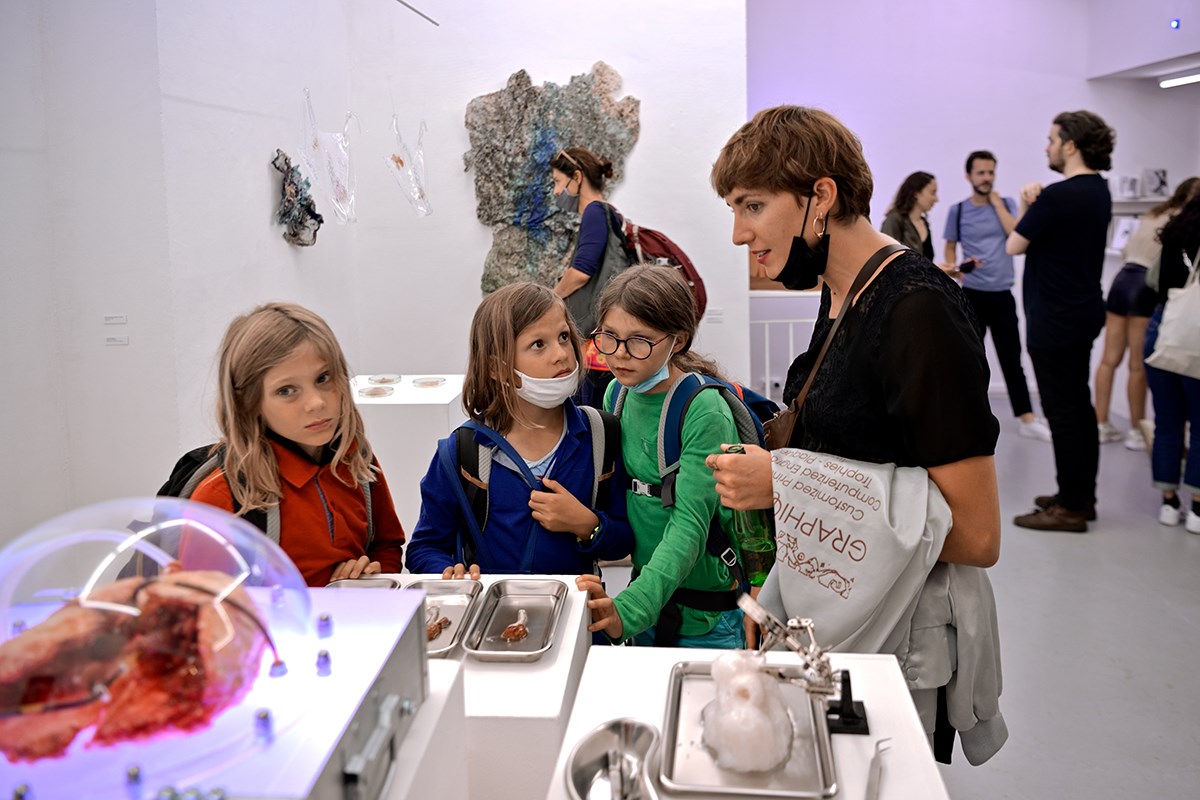
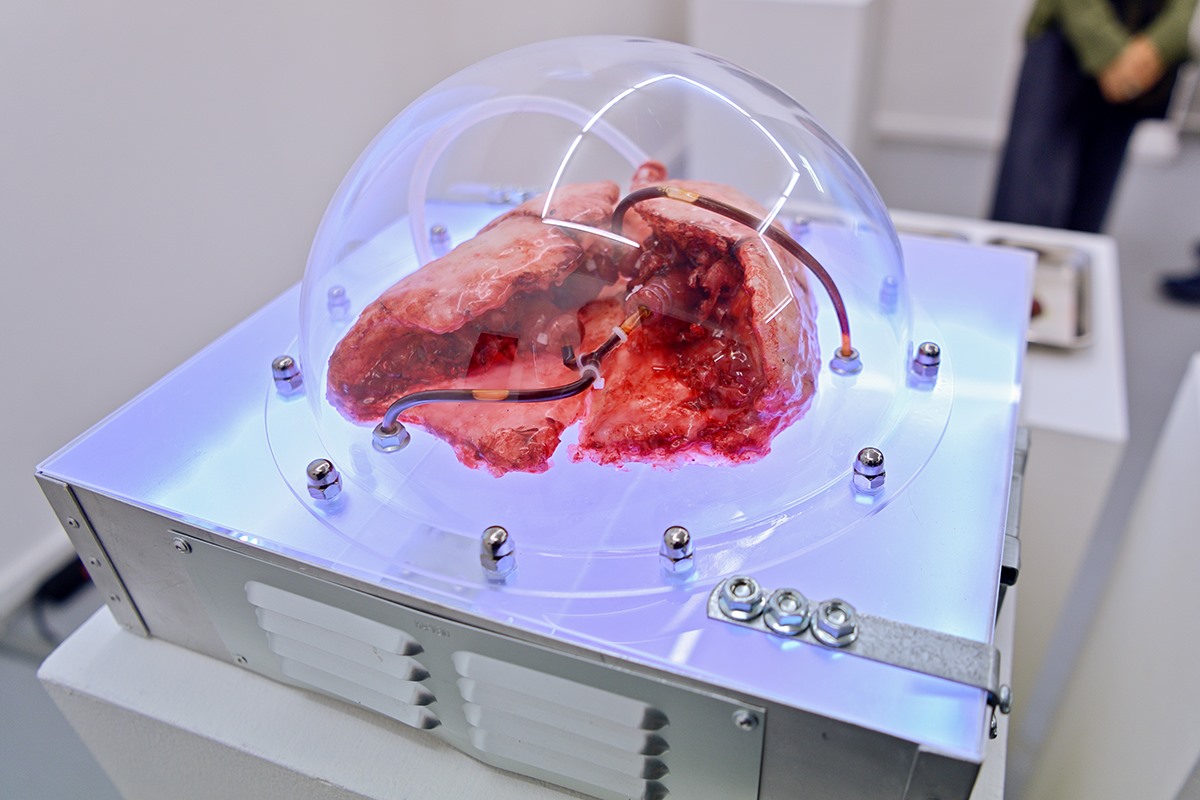
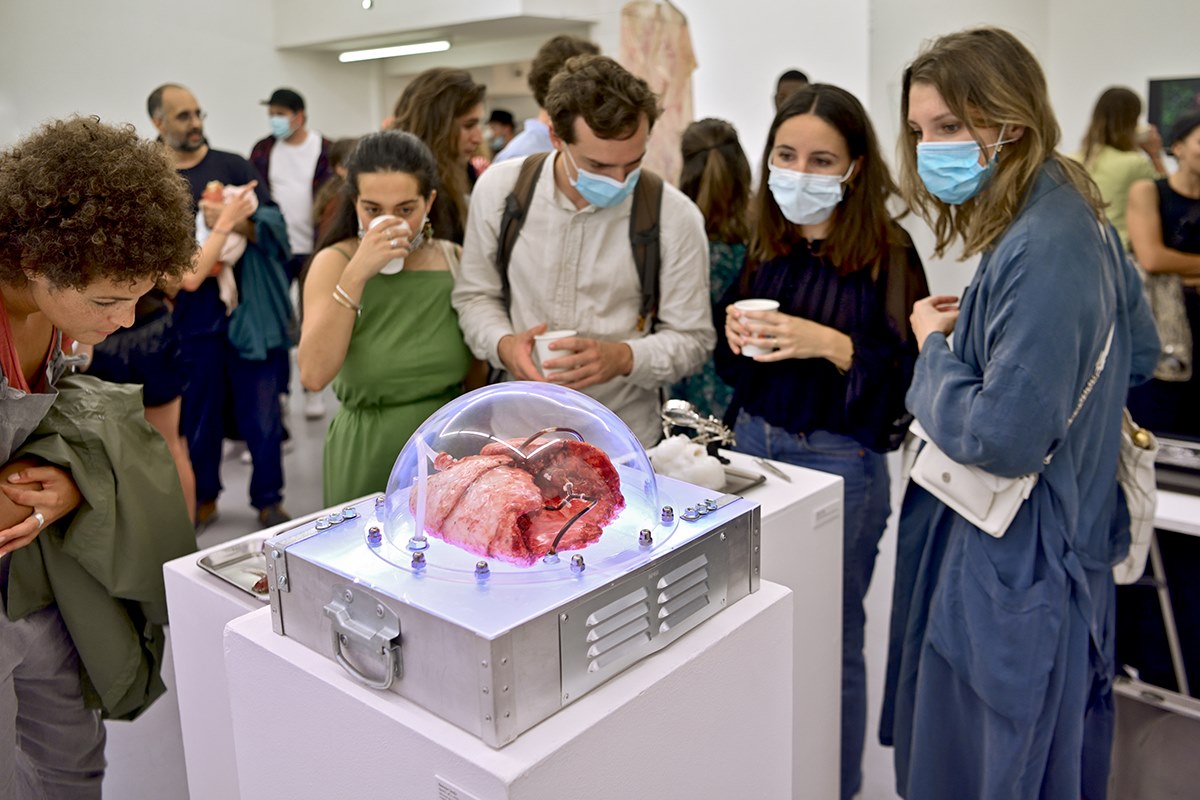

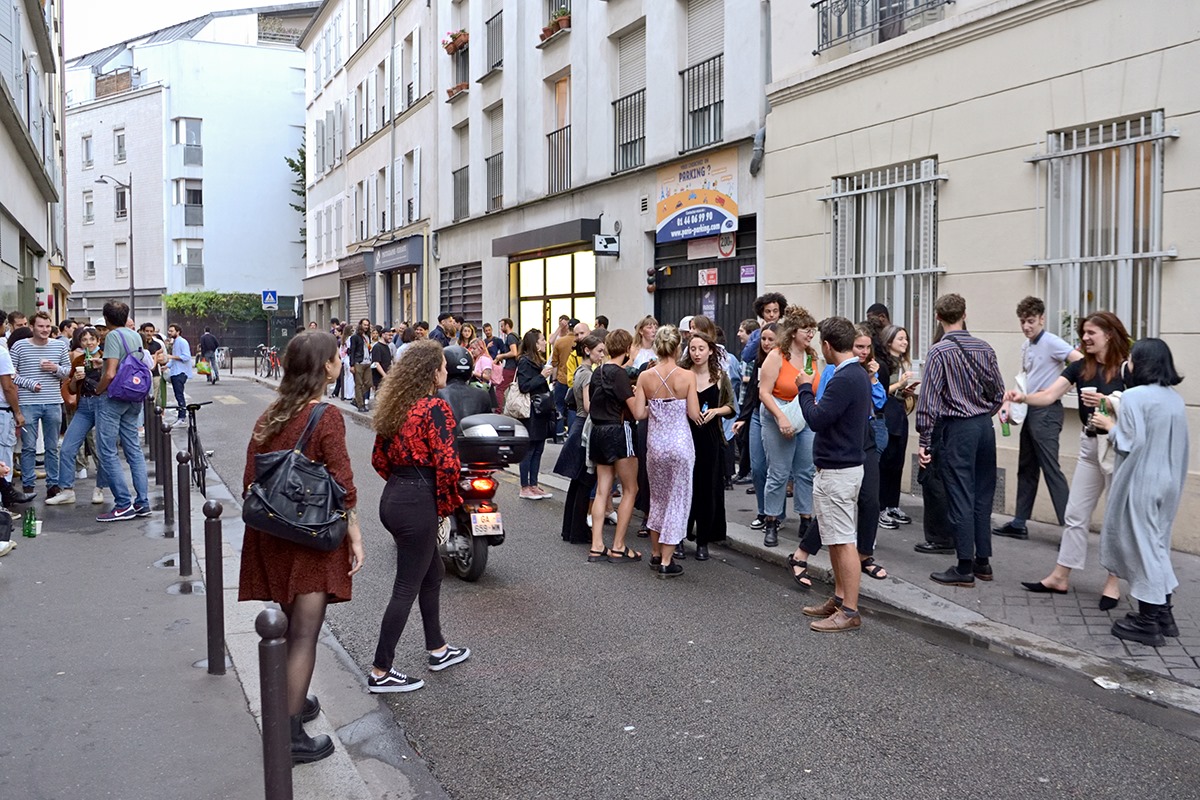

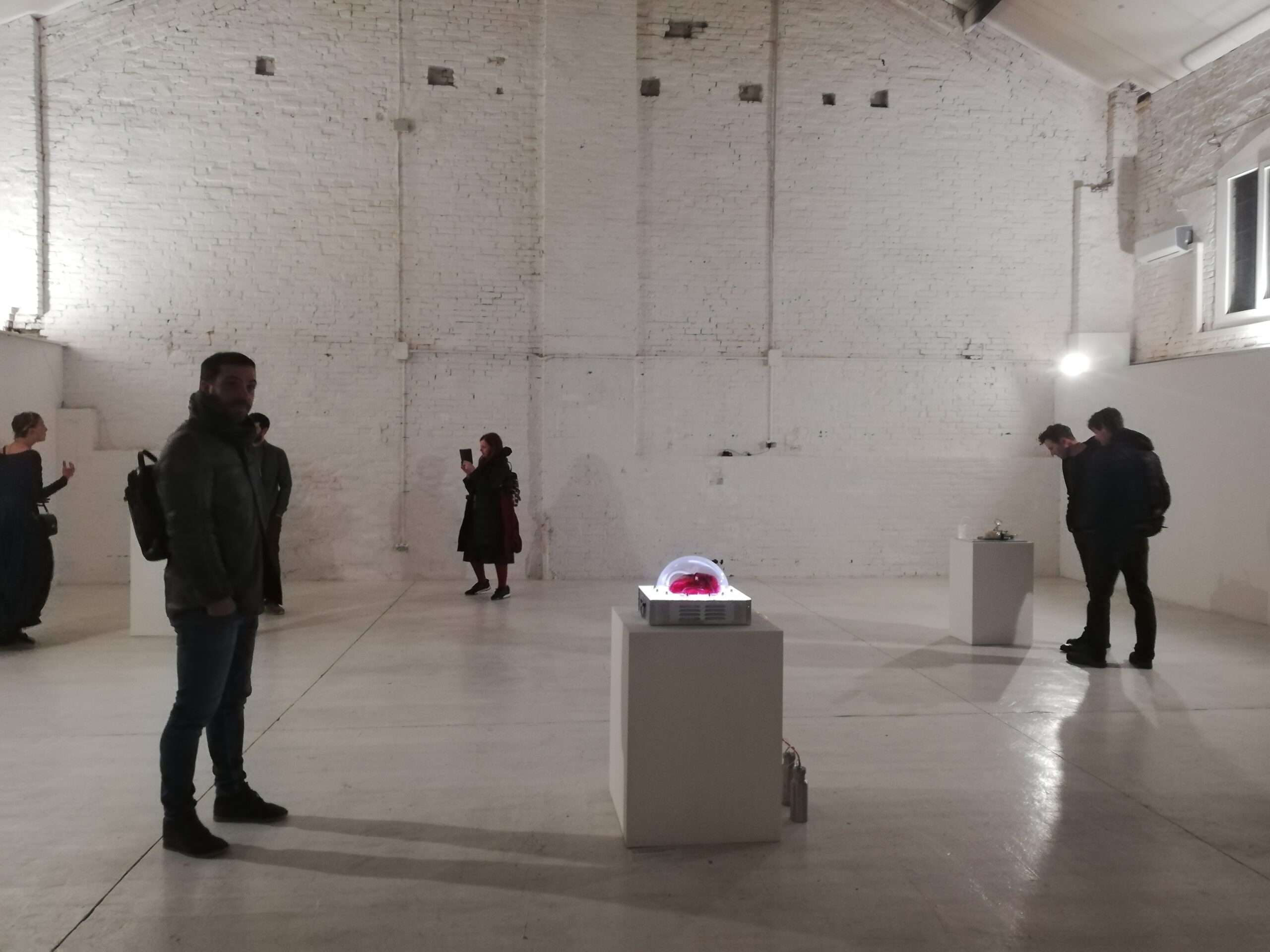
This project was commissioned by Unbore Collective. The project aims to raise awareness about current biotechnological research as well as potential controversial private medical uses.
Collaborator:
Prof. Lucy Di Silvio, Professor in tissue engineering at King’s College London.
